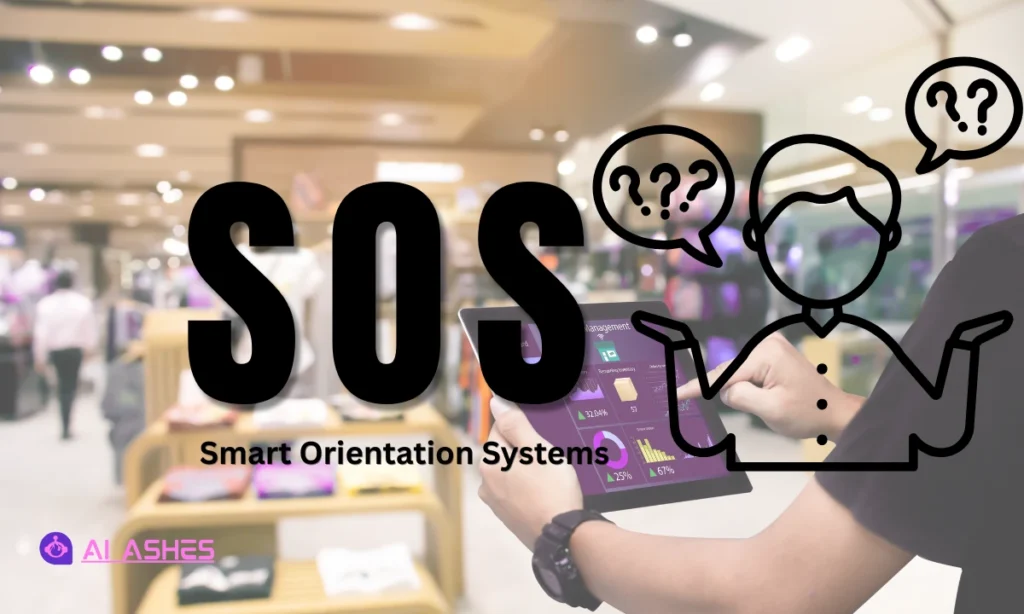Intelligent orientation control means using smart systems to guide how something moves or stays in position. It helps machines know where they are and where to go next. These systems don’t just guess, they learn, adjust, and stay accurate.
Thanks to AI-based orientation management, this technology has become sharper and faster. Today, robots, drones, and even smartphones use intelligent direction control systems. These systems work like a brain. They watch, think, and react. This is possible because of closed-loop AI control systems that learn from their own actions.
This article is about how intelligent orientation control works, where it’s used, and why it matters. We’ll show how smart orientation systems are changing industries. You’ll learn about the latest AI orientation systems, how they support robots and navigation, and what makes them reliable. We’ll also share real-life uses, expert tips, and a helpful FAQ at the end.
Let’s dive into the world of intelligent orientation control and discover how AI is making it smarter, faster, and more useful in daily life.
How Smart Orientation Systems Work: The Core Mechanics

Smart orientation systems help machines know where they are and how to move the right way. These systems use three main parts: sensors, processors, and actuators. Together, they work in a loop. This loop keeps checking, thinking, and acting again and again.
First, sensors collect data. They check things like tilt, speed, or direction. Then, the processor reads the data and decides what to do. The actuator follows the command and moves the machine. After that, the sensors check again to see what happened. This is called sensor-actuator-processor feedback.
This loop helps machines stay steady and correct their path. It is like when you walk on bumpy ground. You feel each step and adjust to stay balanced. That’s what machines do too, using actuator feedback orientation.
To make movement even better, many systems now use sensor fusion. This means combining data from many sensors for more accuracy. Techniques like the Kalman filter help improve 3D tracking by filtering and merging sensor inputs more precisely.
Let’s compare:
- Traditional systems follow fixed rules. They don’t change based on the environment.
- Smart orientation systems learn and react. They become more accurate over time.
- AI orientation systems go a step further. They use deep learning to predict movement and prevent errors before they happen.
These new systems can adjust in real time. They move better, stay balanced, and remember what works. AI orientation systems are used in robots, drones, cars, and wearables. They are fast, smart, and safe.
This change from old systems to intelligent orientation control is making machines smarter than ever before.
Applications of Intelligent Orientation Control in Robotics
Intelligent orientation control is changing how robots move, learn, and complete tasks. From simple cleaning bots to complex factory arms, this smart tech helps them stay steady and work with care. It’s now a key part of the future of adaptive robotics.
Mobile Robots Stay on Track
In busy places like hospitals, malls, or warehouses, mobile robots use AI orientation systems to move smoothly. These systems help the robots sense walls, people, and other objects. Then they adjust their path without bumping into things.
This smart movement comes from vision-language-action models. These models let robots “see,” “understand,” and “act” on voice or camera input. That means they respond like humans in tricky spaces.
Drones That Fly Smarter
Drones are another great use case. They fly in the air but still need control to avoid falling or crashing. Intelligent direction control systems guide them through changing winds or tight spaces. The result is safer and more stable flights.
Some drones even map out new paths on their own. This is called neurorobotics, where the machine “thinks” before moving. It’s used in rescue missions, farming, and filming.
Industrial Arms Work with Precision
In factories, robotic arms build cars, pack items, or move heavy parts. With smart orientation systems, they don’t shake or miss a step. They repeat tasks with care and speed.
The control loop checks position and makes real-time changes. It’s better than old machines that followed only fixed steps.
How They Compare to Mapsted and Deliberate Directions
Mapsted uses location tech without GPS. It helps devices know their place indoors. But it’s more about tracking than movement. Intelligent orientation control focuses on how machines move, not just where they are.
Deliberate Directions trains leaders using AI. But it’s built for people, not robots. It does not offer the deep movement tech found in AI-based orientation management.
Applications of intelligent orientation control in robotics go far beyond what other tools offer. They allow machines to think, react, and move like never before. This makes them useful in real life, not just in labs.
How AI Enhances Orientation Control in Navigation Systems
Navigation is not just about finding a path. It’s also about staying on track. That’s where AI-driven navigation control comes in. It makes sure machines move the right way and respond to real-world changes.
Machine Learning Learns from Data
Machine learning helps systems get smarter over time. The more a device moves, the more it learns. For example, if a robot keeps turning too late, it will notice the pattern. Next time, it turns earlier. This is called predictive orientation management.
With this power, machines fix mistakes on their own. They don’t need human help every time. They become better each day.
Reinforcement Learning Rewards the Right Move
Reinforcement learning is like training a pet. The system gets a reward for making a good move and a penalty for a bad one. Over time, it learns the best way to move in different places.
Let’s say a delivery robot enters a narrow path. If it bumps into walls, it learns not to do that again. It finds the smoothest path by learning from rewards and mistakes. This makes orientation control more accurate and fast.
Agentic AI Makes Decisions
Agentic AI means a machine can make decisions on its own. It acts like a smart helper. It sees the world, thinks, and acts. In navigation, this is a game-changer.
Agentic systems don’t wait for every command. They guide vehicles, drones, or robots on their own. They read maps, sense obstacles, and change course when needed.
This is how AI enhances orientation control in navigation systems. It adds memory, planning, and smart response. Old systems just followed instructions. But with AI, systems think first and move second.
The result? Safer travel. Smoother paths. Fewer errors. That’s why AI-based orientation management is now used in self-driving cars, robotic carts, and smart delivery drones.
AI is not just a tool here. It is the brain behind the move.
Step-by-Step: Implementing a Basic AI Orientation System
Building a simple AI orientation system is easier than it sounds. You only need the right steps and tools. Below is a beginner-friendly guide to help you get started. This setup works for small robots, drones, or even DIY projects.
Step 1: Start with Sensors
Sensors are the first piece. They collect real-time data like motion, angle, speed, and position. Common choices include:
- Gyroscope – tracks rotation
- Accelerometer – detects tilt and movement
- Magnetometer – helps with direction
You can also use sensor fusion orientation systems. These systems mix sensor data to improve accuracy. For example, combining a gyroscope with an accelerometer gives better results than using one alone.
Step 2: Build the AI Model
Next, you train a lightweight AI model. For small systems, TinyML is a great tool. It runs machine learning on simple devices like Arduinos or Raspberry Pi boards. The model learns patterns from your sensor data and starts to make basic predictions.
You don’t need much data at first. Just record movement samples and label them. The AI will learn what’s straight, what’s tilted, and when to correct.
Step 3: Set Up the Control Loop
Now it’s time to build the control loop. This is the core of embedded orientation AI. The loop reads data from sensors, sends it to the AI model, and then gives commands to the actuator.
You can use ROS (Robot Operating System) to manage this loop. It helps with timing, tasks, and data flow. Even beginners can use its tools and libraries.
Step 4: Test and Validate
Finally, test the system. Move it around. See if it reacts the right way. If not, tune the model or sensor settings. Keep testing until the AI makes smart decisions every time.
With these steps, you now have a basic but working AI orientation system. It’s small, smart, and ready to grow. You can later improve it with better sensors or more training data.
This is how embedded orientation AI starts. From simple loops to smart robots, it all begins here.
Best Practices for Beginners & Pros
Setting up an intelligent orientation control system can be simple or advanced. It depends on your goals. Whether you are just starting or already skilled, the right steps help you get better results. Below are some best practices to follow.
For Beginners
If you’re new, focus on doing the basics well. A small mistake in setup can affect the whole system.
1. Calibrate Your Sensors
Always start by calibrating your sensors. This means checking they read values correctly. Use tools that help you set zero points or balance the axes.
2. Start with Simple Models
Use small machine learning models like decision trees or basic neural nets. You can run them on boards like Arduino or Raspberry Pi using TinyML.
3. Ensure Basic Safety
Test your system in open spaces. Keep it slow at first. This helps prevent damage if the orientation control makes a mistake.
4. Check Sensor Fusion
Mix data from two or more sensors. For example, combine a gyroscope and accelerometer. This improves balance and accuracy.
Advanced Strategies
Once you get the basics right, go further with orientation system optimization.
1. Use AI Tuning for Control
Fine-tune your models using real-world data. Apply AI tuning orientation control to adjust based on performance. This helps the system learn and adapt.
2. Add Reinforcement Learning
Let your system learn from good or bad moves. This helps in fine control, especially in changing environments like outdoors or crowded rooms.
3. Use Real-Time Data Logging
Record every move and error. Review logs to find patterns and improve accuracy. This is key when building reliable, repeat-use systems.
4. Test on Real Use Cases
Use the system in real-life projects. This gives you a better idea of how the AI reacts and what to fix.
Whether you’re starting or scaling up, these tips help you build better AI orientation systems. They lead to safer, smarter, and more responsive machines.
Future Trends & Innovations
The future of intelligent orientation control is moving fast. New ideas like agentic AI, living intelligence, and embedded orientation intelligence are shaping what comes next. These systems will not just follow commands. They will think, learn, and act more like humans.
Agentic AI Takes the Lead
Agentic AI is AI that can make its own choices. It watches the world, makes plans, and acts without waiting for every instruction. In orientation systems, this means smarter decisions during movement. Robots and drones will not just react. They will predict and plan ahead.
Embedded Orientation Intelligence Grows
Tiny chips are getting smarter. With embedded orientation intelligence, even small devices will run powerful models. This will reduce the need for cloud computing. Devices will think on their own. They will sense, process, and move—all in real time.
You will see this in wearables, home robots, and medical devices. The systems will adjust on the spot and keep improving with use.
Living Intelligence Orientation
A new idea in robotics is called living intelligence orientation. This means the robot learns like a human brain. It remembers things, learns from the past, and keeps getting better. It doesn’t just follow old patterns, it can make new ones.
This is a big step for smart robots. They can now change how they move based on people, weather, or space around them, all in real time.
You can see how this works in real life by looking at how AI keeps robots steady, even when they move fast or over bumpy ground. This shows the future of smart robot control in action.
In the next few years, we will see AI orientation systems that feel more alive. They will need less training and still do more. They will think on their own, work in teams, and fit into daily life.
This is the future of orientation control, fast, smart, and always learning.
Case Studies: How Real Projects Used Intelligent Orientation Control
Learning from real-life projects helps us see how smart orientation systems work in action. Below are a few stories showing how people used these systems in real ways to solve problems and get better results.
Case Study 1: Helping Drones Fly Better in Windy Areas
User: Sara T., Engineering Student (Canada)
Challenge: Sara was building a drone for a school project. The drone flew fine indoors but got shaky and off-course in outdoor wind.
Solution: She added sensor fusion orientation systems using a gyroscope, accelerometer, and magnetometer. She used TinyML to train a small AI model that helped the drone balance in real time.
Takeaway: Using AI-based orientation management helped her drone fly better even in changing weather. It became more stable and smarter with every test.
Case Study 2: Making a Robot Arm Work Smoothly in a School Lab
User: Mr. Adil R., Science Teacher (Pakistan)
Challenge: His school’s robot arm kept shaking while picking up objects. It missed small parts or dropped them.
Solution: He used an AI orientation system with a simple feedback loop. He also added real-time logging and made the system learn from each move.
Takeaway: The robot arm started working smoother and faster. With adaptive orientation robotics, students could now run better experiments and learn more from the results.
Case Study 3: Improving a Delivery Robot for a Small Business
User: Tom J., Tech Startup Founder (USA)
Challenge: Tom’s delivery robot couldn’t move safely around people in a small shop. It bumped into shelves and got stuck.
Solution: He built an intelligent direction control system with reinforcement learning. The robot learned from mistakes and started avoiding obstacles better.
Takeaway: With real-time route optimization control, the robot became safer and faster. It helped his shop deliver small items to customers without human help.
Conclusion
Intelligent orientation control is not just a feature. It’s the brain behind how machines move, react, and adapt. From small robots to advanced drones, these systems use real-time data, AI, and smart feedback loops to guide every move. We explored how smart orientation systems work, how AI supports navigation, and where the future is heading.
Whether you’re building a mobile bot or testing ideas in a lab, now is the time to explore. Start with pilot projects using simple tools like TinyML or ROS. These projects help you understand the flow of AI orientation systems without big costs. You’ll also see the real impact of using AI in motion control and system learning. Over time, the benefits like smoother paths, fewer errors, and smarter actions, far outweigh the initial effort.
For professionals, adding AI-based orientation management can boost system reliability and cut down on manual control. For beginners, the steps are clear and doable. The key is to start small and learn as you go.
This guide covered both the basics and advanced trends, from applications of intelligent orientation control in robotics to how AI enhances orientation control in navigation systems. If you have questions or want to try something new, drop a comment below. We’re here to help.
Stay updated on AI trends! For more expert tips and the latest breakthroughs, follow AI Ashes Blog. Dive deeper into machine learning, data science, and cutting-edge AI research.
FAQs
Q1: What is intelligent orientation control?
It is a smart way to help machines know and adjust their direction using sensors, AI, and feedback loops. It keeps devices balanced, accurate, and ready for real tasks.
Q2: How do smart orientation systems learn?
They use data from gyroscopes, accelerometers, and magnetometers. AI models like TinyML or ROS process this data. They learn to correct movement by practicing again and again.
Q3: Why is sensor fusion important?
Sensor fusion mixes data from multiple sensors. It makes control more precise. A real example is the FreeIMU board that merges sensors for smooth motion tracking.
Q4: Where can I find tutorials on orientation control code?
GitHub has tutorials for sending drones to waypoints and building control loops. These are easy to follow for beginners.
Q5: How do AI orientation systems improve navigation?
They use machine learning and reinforcement learning to predict errors, fix them in real time, and adapt routes while moving.
Q6: Are there open-source examples to learn from?
Yes. Projects like Autonomous Systems Guide show tools, libraries, and methods for building smart, self-driving systems.
Q7: Is intelligent direction control safe for real use?
Yes. It adds live feedback and predictive AI to avoid crashes and adapt to new paths. It is used in drones, robots, and delivery vehicles.
Q8: Can small devices use embedded orientation AI?
Yes. Even tiny devices like Arduino or Raspberry Pi can run TinyML models to track and manage orientation in real time.
Q9: How can intelligent orientation control help robotics?
In applications of intelligent orientation control in robotics, it makes tasks like drone flight, robot arms, and delivery bots accurate and flexible.
Q10: Where can I ask more questions or find help?
Platforms like Quora, GitHub forums, and research papers are great. Search for terms like AI-based orientation management or intelligent direction control systems for guides, code, and expert answers.








